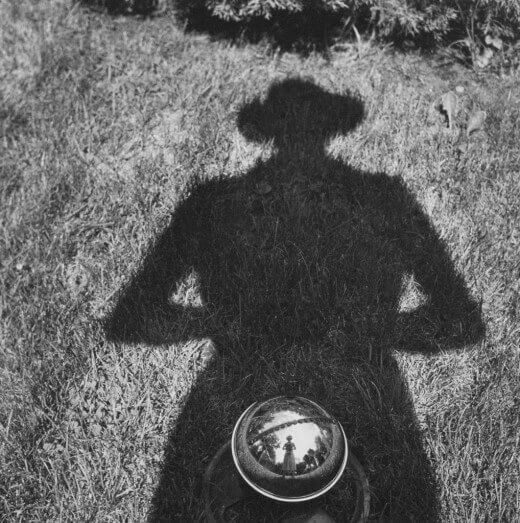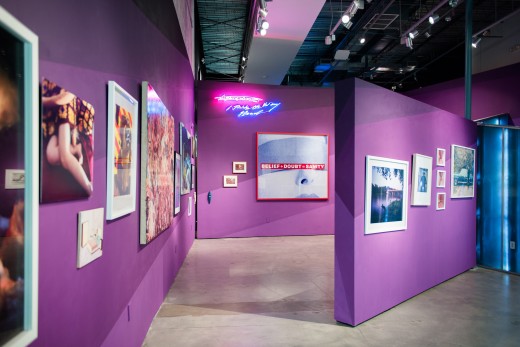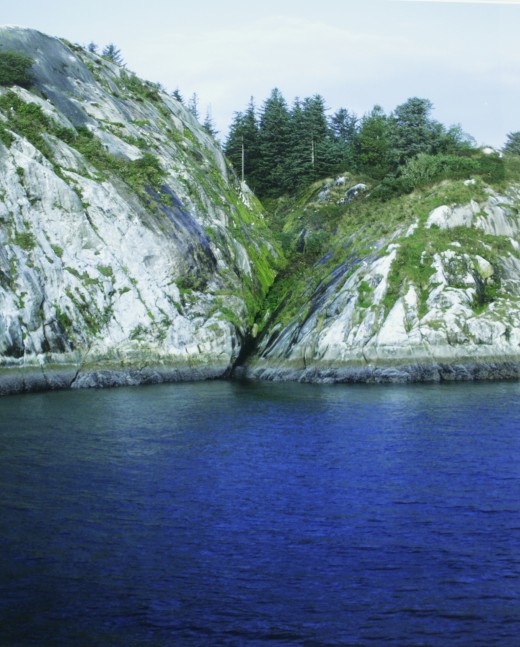
Vivian Maier, Untitled, Self-Portrait Gelatin Silver Print, 20" x 16"
Girls’ Club Collection
November 10th, 2013 – September 24th, 2014
There are over 700 pieces in the collection of Francie Bishop Good and David Horvitz. At Girls’ Club, they get rotated in a yearly batch of 40 to 50 by visiting curators. This year, the TM Sisters stepped up to select pieces that “exuded sympathetic vibrations, vivid metaphysics, transformation of all varieties, elements of the supernatural and explosions of psychic power.” That’s quite a checklist. Wouldn’t you like to see the pieces that got left behind? Those whose vibrations were quite unsympathetic, whose metaphysics were dull and drab? It’s a wide, loosely knotted net. Yet, simply because of the quality of the work, it still manages to snare.

Install shot by Teodora Dakova
One first encounters an untitled self-portrait by Vivian Maier. To begin with, there is the shadow, how it equally relates to geometry and biology. It seems ready to tip away from the corporeal to a precarious stack of triangles and circles. Around the shadow is the rough grass of a lawn, a Midwestern lawn felt through memory. It is encroached upon by another shadow—that of a tree—ominously looming from above. Maier and her camera are aiming down, and the focal point of the photograph what looks to be a metallic lawn sprinkler, but what could easily be a fallen chunk of Sputnik. Here the camera recreates the world in all its warp and distortion.
Head past the large Uta Barth tripart panorama unfairly cramped in the corner to the upstairs gallery. A small photograph by Sophie Calle from 1983 rests in the corner like a votive or a dying grandmother. A statue made of weathered stone, with two faces. One obscured by shadow, the other not. A fine photograph, but since this is Sophie Calle, an artist known for always having a story lurking around (or a story of lurking around), the image is especially charged. It seems like an illustration in a W.G. Sebald novel. There but not, somewhere between image and text. Though understated, the photograph is just as evocative as the other, louder work on display.

Catherine Opie, Alaska Landscape #3, 2007. C-print. 30″ x 24″.










